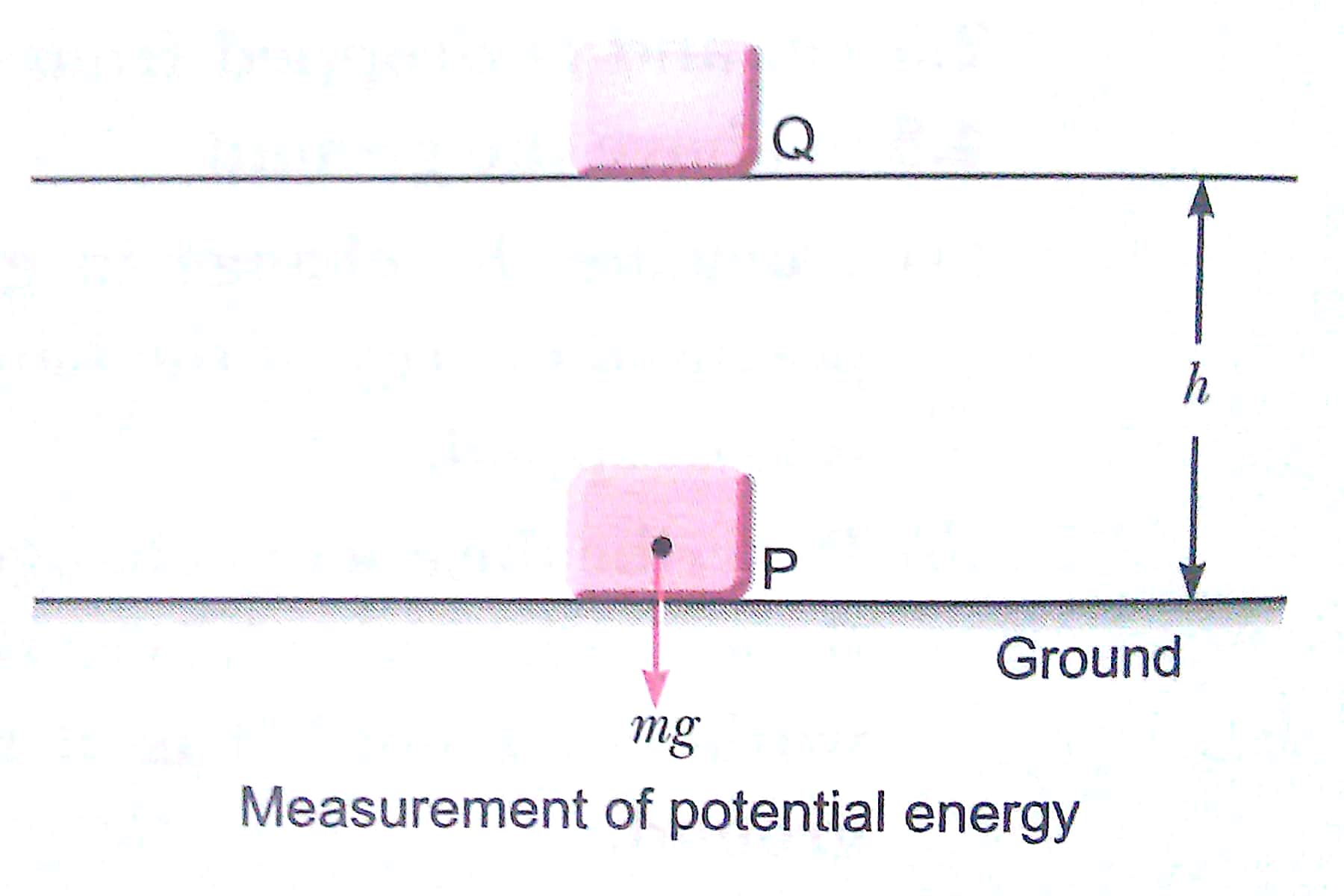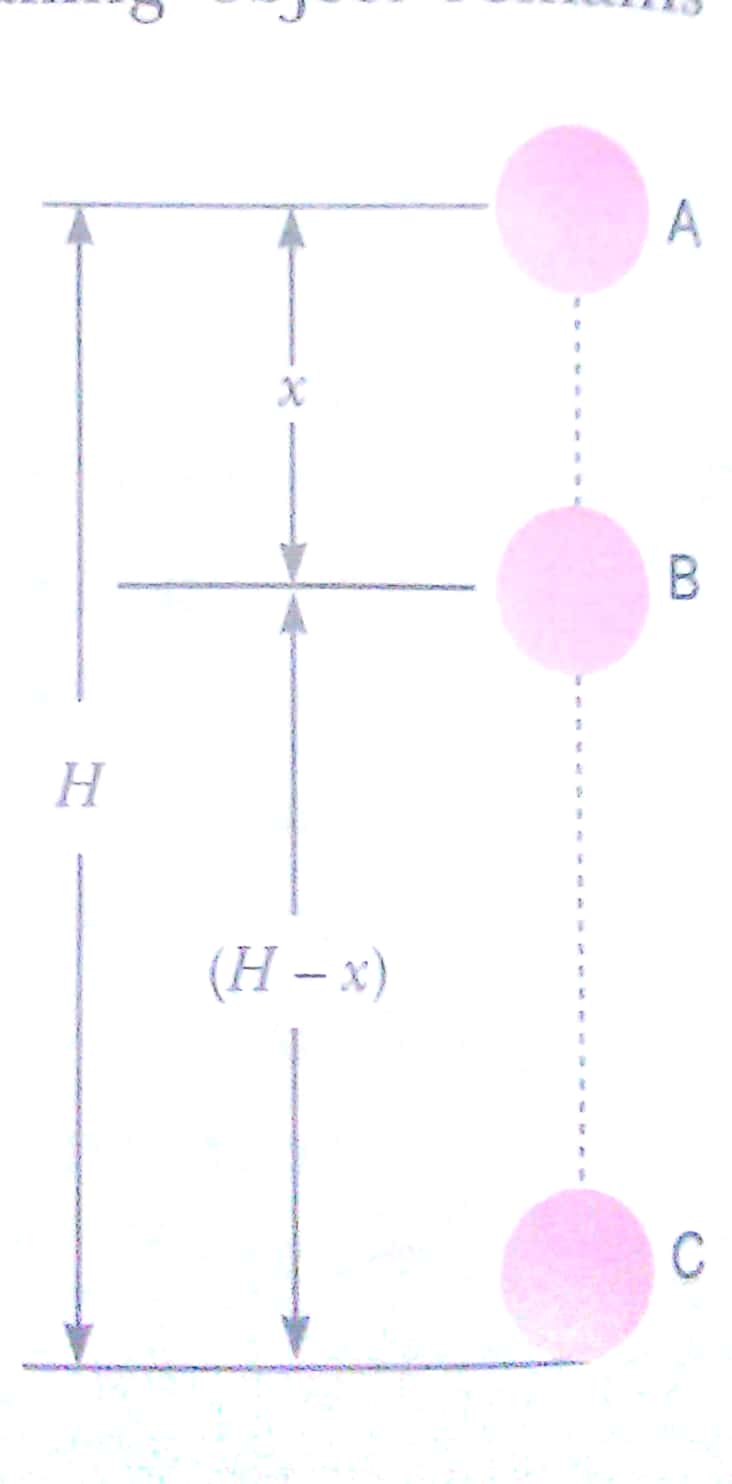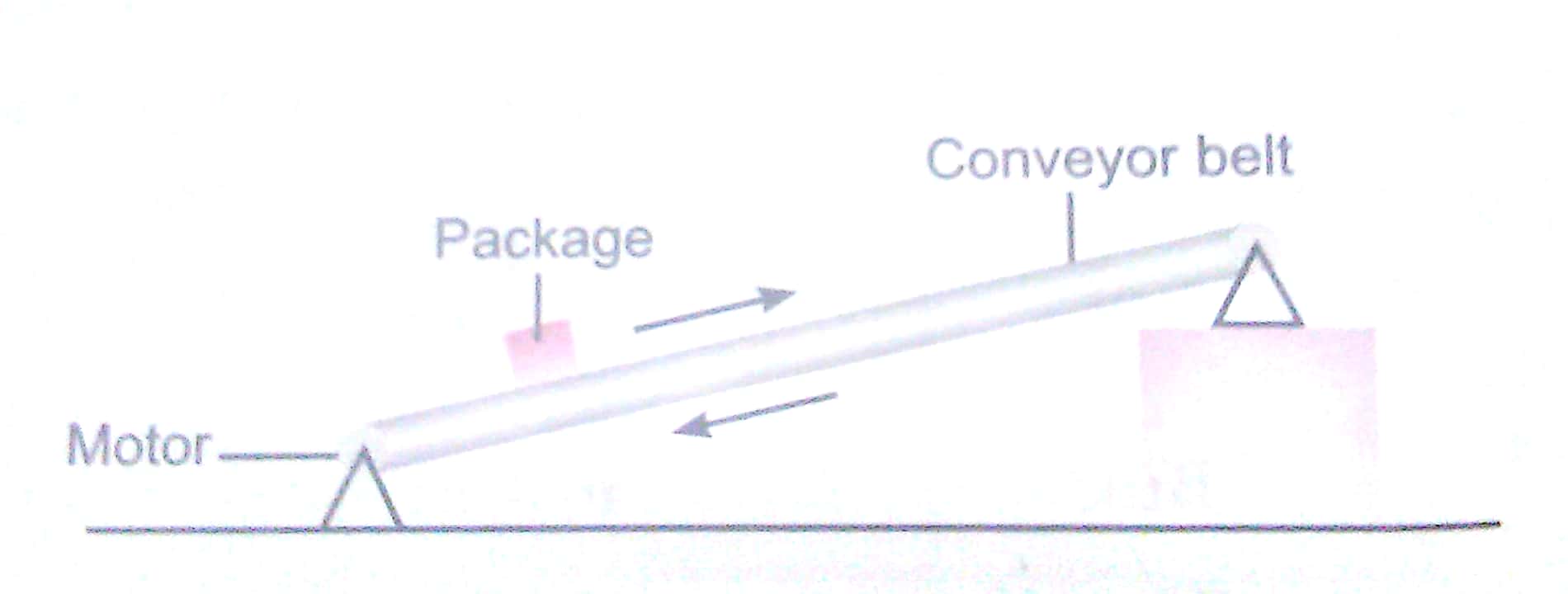Long Answer Questions - 5 Marks
Q1. Briefly describing the gravitational potential energy, deduce an expression for the gravitational potential energy of a body of mass m placed at a height h, above the ground.
Ans. When an object is raised through a certain height above the ground, its energy increases. This is because the work is done on it, against gravity. The energy present in such an object is called gravitational potential energy. Thus, the gravitational potential energy of an object at a point above the ground is defined as the work done in raising it from the ground to that point against gravity. Consider a body of mass m lying at point P on the Earth's surface, where its potential energy is taken as zero. As weight, mg acts vertically downwards, so to lift the body to another position Q at a height h, we have to apply a minimum force which is equal to mg in the upward direction. Thus, work is done on the body against the force of gravity.

We know that,
Work done, W = Fs … (i)
As F = mg and s = h
Putting these values in equation (i), we get
W = x = h = mgh
This work done on the body is equal to the gain in energy of the body. This is the potential energy of the body.
∴ Potential energy PE = mgh
Q2. Show that when a body is dropped from a certain height, the sum of its kinetic energy at any instant during its fall is constant.
Ans. The mechanical energy (kinetic energy + potential energy) of a freely falling object remains constant. It may be shown by calculation as follows:
Suppose a body of mass m falls from point A, which is at height 'H’ from the surface of earth. Initially at point A, kinetic energy is zero and the body has only potential energy.

Total energy of body at point A
= Kinetic energy + Potential energy
= 0 +
mgH =
Suppose during fall, the body is at position B. The body has fallen at a distance  from its initial position. If velocity of body at B is v, then from
from its initial position. If velocity of body at B is v, then from
formula
we have


Potential energy of body at point 
∴ Total energy of body at point B = Kinetic energy + Potential energy
 …(ii)
…(ii)
Now suppose the body is at point C, just above the surface of earth (i.e., just about to strike the earth). Its potential energy is zero.
The height by which the body falls =
If  is velocity of body at C, then from formula
is velocity of body at C, then from formula

We have 
So, v2 = 0 + 2gH = 2gH
∴ Kinetic energy of body at position 

∴ Total energy of body at C
= Kinetic energy + Potential energy
 …(iii)
…(iii)
Thus, we see that the sum of kinetic energy and potential energy of freely falling body at each point remains constant.
Thus, under force of gravity, the total mechanical energy of body remains constant.
Q. 3. A light and a heavy object have the same momentum, find out the ratio of their kinetic energies. Which one has a larger kinetic energy?
Ans. Linear momentum of first object,  and of second object,
and of second object, 
But, 
or, 
If 

and 
So, 
But, 
Therefore, 
Q. 4. Four men lift a 250 kg box to a height of 1 m and hold it without raising or lowering it.
(a) How much work is done by the men in lifting the box?
(b) How much work do they do in just holding it?
(c) Why do they get tired while holding it? (g = 10 ms-2)
Ans. (a) F = 250 kg  10 ms-2 (g = 10 ms-2)
10 ms-2 (g = 10 ms-2)
= 2500 N
s = 1 m
W = F. s
= 2500 N x 1 m
= 2500 Nm = 2500 J
(b) Zero, as the box does not move at all while holding it.
(c) In order to hold the box, men are applying a force which is opposite and equal to the gravitational force acting on the box. While applying the force, muscular effort is involved. So, they feel tired.
Q. 5. A car of mass 900 kg is travelling at a steady speed of 30 m/s against a resistive force of 2000 N, as illustrated in figure.

(i) Calculate the kinetic energy of the car.
(ii) Calculate the energy used in 1.0 s against the resistive force.
(iii) What is the minimum power that the car engine has to deliver to the wheels?
(iv) What form of energy is in the fuel, used by the engine to drive the car?
Ans. ( ) Kinetic energy
) Kinetic energy 

= 4,05,000 J
( ) Energy used = Work done against resistive force
) Energy used = Work done against resistive force
= Force × Distance
= 2,000 × 30 = 60,000 J = 60 kJ
(iii) Minimum power = 
= 
(iv) Chemical energy.
Q. 6. Figure shows a conveyor belt transporting a package to a raised platform. The belt is driven by a motor.

(i) State three types of energy, other than gravitational potential energy, into which the electrical energy supplied to the motor is converted.
(ii) The mass of the package is 36 kg. Calculate the increase in the gravitational potential energy (P.E.) of the package when it is raised through a vertical height of 2.4 m.
(iii) The package is raised through the vertical height of 2.4 m in 4.4 s. Calculate the power needed to raise the package.
(iv) Assume that the power available to raise package is constant. A package of mass greater than 36 kg is raised through the same height. Suggest and explain the effect of this increase in mass on the operation of the belt.
Ans. (i) (a) Kinetic energy of belt or the package
(b) Heat energy
(c) Sound energy
(ii)
Gravitational potential energy =
(iii) Power = 
(iv) Mass is increased and power is constant, so increase in potential energy of mass is greater. Also, as mass is increased, speed is reduced and hence time taken is longer.

